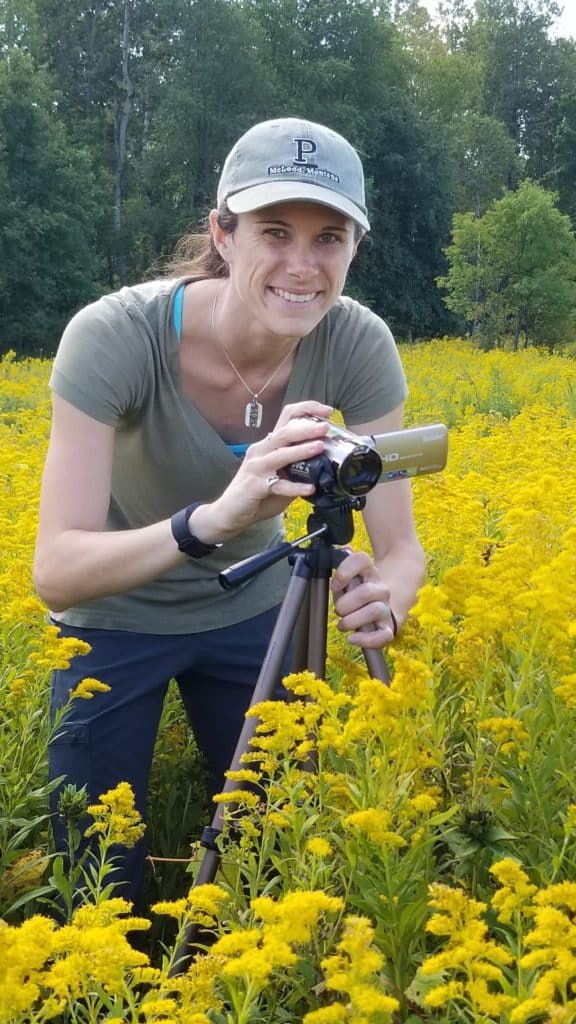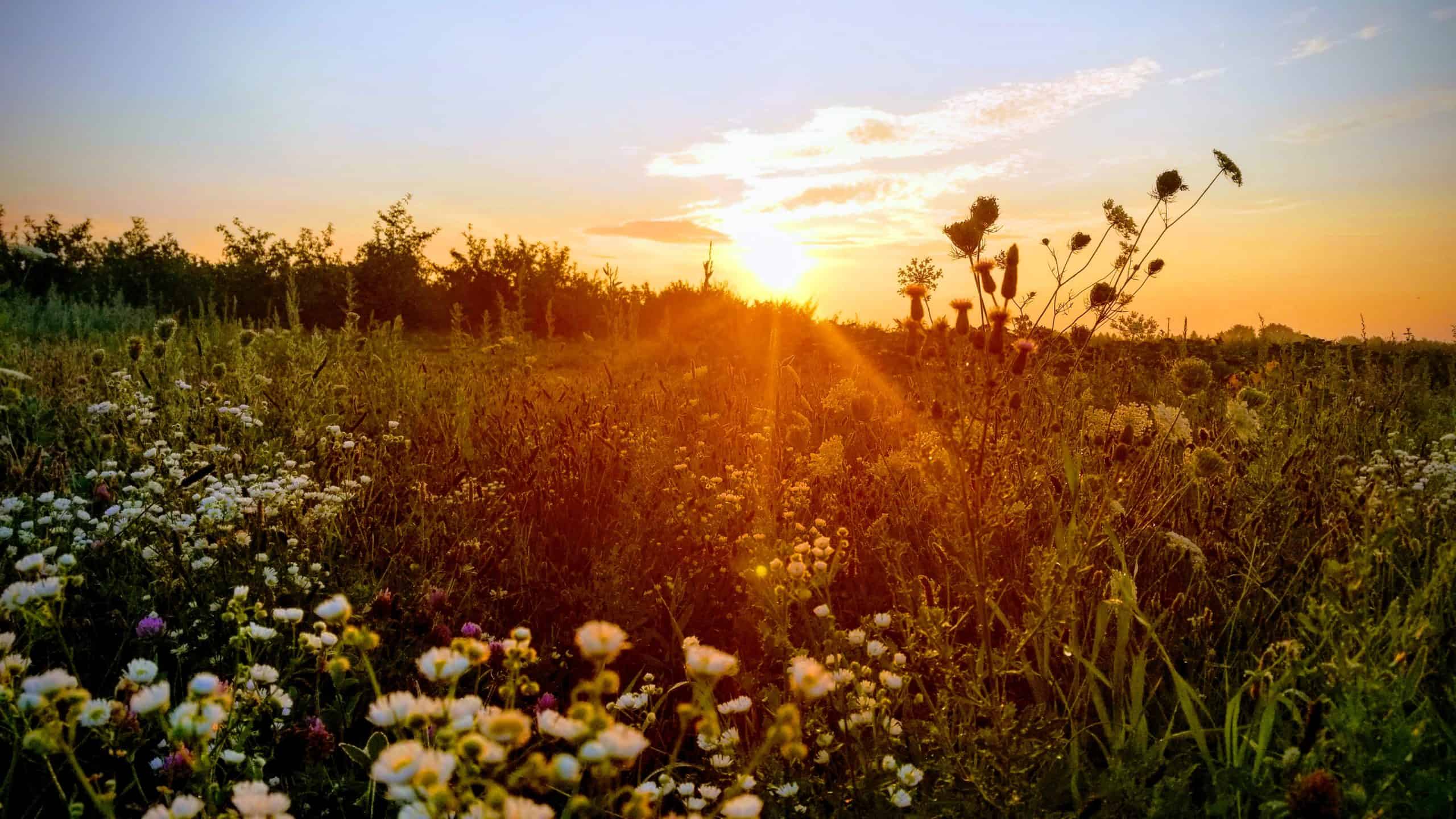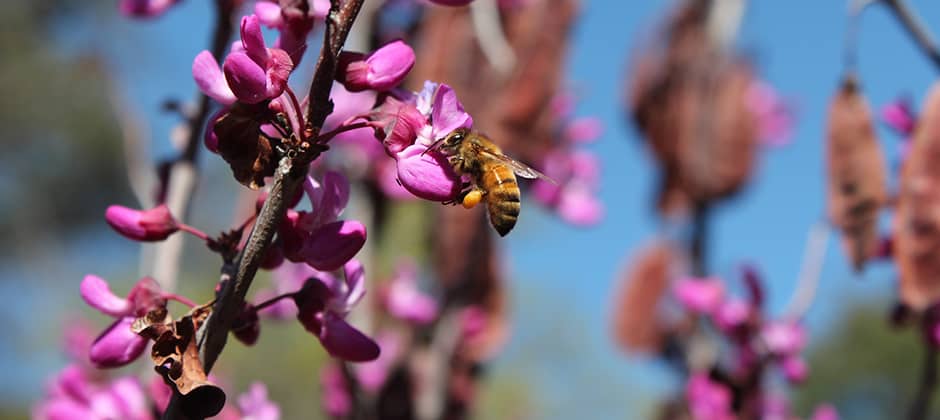Share this article
More biodiversity makes for healthy bees
More diverse communities of bees in Michigan, including both native and nonnative pollinators, result in less virus spread.
Researchers had already known about a previous hypothesis called the Dilution Effect, showing that greater biodiversity in a community can help reduce prevalence of disease and transmission risk. For example, researchers have found that diverse mammal communities can have reduced prevalence of the tick-borne Lyme disease. But in some cases, the opposite can occur where more biodiverse communities have greater prevalence of diseases, called the Amplification Effect. Researchers are still trying to understand the factors that lead to the Dilution Effect versus the Amplification Effect.
“I was really interested to find out which of those hypotheses might be occurring in pollinator communities infected with viruses,” said Michelle Fearon, a postdoctoral fellow at the University of Michigan and the lead author of the study published in the Ecological Society of America.
To find out, Fearon and senior author Elizabeth Tibbetts sampled 14 different winter squash farms in Michigan to determine the diversity of bees visiting them. She visited each site twice, either capturing bees with a net or attracting them with a cup of soapy water that the bees mistake as flowers. She collected samples within the fields and on field edges to get a sense of the entire community of bees interacting in the area. The majority of bees she collected were native, wild bees.

Researcher Michelle Fearon records bee visitation in a field of goldenrod. Credit: Meagan Simons
Then, she put the bees on dry ice to kill them quickly so that the viruses would still be preserved and able to be looked at later. “Making sure they are frozen and preserved is important to maintain stability of the virus and to be able to accurately detect the viruses in the bees,” she said.
Fearon then studied viruses, including deformed wing virus, black queen cell virus and sacbrood virus, in four types of bees that were most common — the European honeybee (Apis mellifera), the eastern bumblebee (Bombus impatiens), the squash bee (Eucera pruinosa) and several species of sweat bee (genus Lasioglossum). The bumblebee, squash bee, and sweat bees are all native bees.
“One really interesting finding was that I found a consistent pattern of the Dilution Effect for the three viruses within all four of the bee species that I examined,” she said. In other words, in areas where more bee species are present, less virus was detected in all of these four bee species, whether they were native or not.
“That was not something I was expecting to find,” Fearon said. Instead, she had expected that honeybee species might show the Dilution Effect and some native bees would show the Amplification Effect. “Our results suggest that as we conserve our pollinator communities and promote greater bee species richness, we are also protecting the health of native and honeybees,” she said.
The researchers suspect that species rich communities help dilute pathogen impact because native bees are not as good viral hosts as honeybees. Native bees don’t get as sick with the viruses and are less likely to spread them to others. So pollinator communities with more native bee species may be key to limiting viral transmission and keeping virus levels low.
Fearon said her study shows the importance of developing pollinator gardens.

A field edge in Erwin Orchards at sunrise. Researchers looked within fields and at their edges to get the best representation of bee biodiversity. Credit: Michelle Fearon
“Planting diverse native flowers provides bees with the pollen and nectar they need while foraging and attracts a wider diversity of bee species,” she said. “These gardens work especially well if you also provide important bee nesting materials, like good soil for ground nesting bees and hollow bamboo stems for mason bees.”
But it also points to problems facing pollinators, such as insecticides, which can cause sublethal effects, including making it harder for bees to resist diseases. While avoiding using them can be difficult, she said, there are some ways to limit their impact, like spraying only in the late afternoon or evening when bees are not as active.
“People tend to think of the plight of the honeybees and how they’re declining, Fearon said. “That’s really important. But a lot of these native bees are also declining from many of the same factors impacting honeybees. We need to protect both honeybees and native bees.”
Header Image: An Apis mellifera bee appears on a redbud. Researchers found more bee diversity means better bee health. Credit: Michelle Fearon








